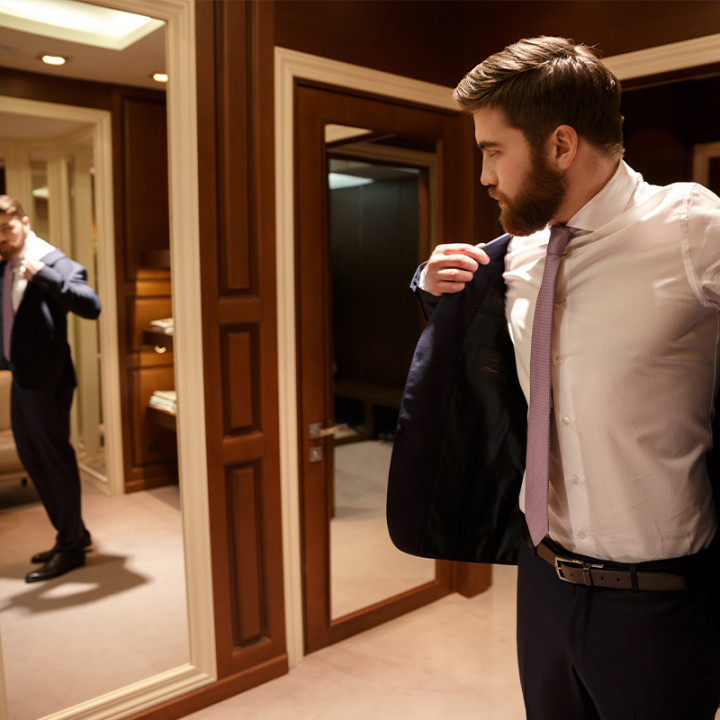
Fractured Minimalism: How Imperfection Defines Style
Minimalism is often associated with clean lines, restraint, and simplicity, yet the philosophy of fractured minimalism embraces imperfection as a defining element of style. In this approach, asymmetry, distortion, and subtle irregularities are not flaws but intentional gestures that convey character, narrative, and presence. Clothing becomes a canvas where tension between order and disruption creates visual intrigue, revealing personality, intention, and thoughtfulness in every fold, seam, and silhouette.
At the heart of fractured minimalism lies the recognition that perfection can feel sterile. Uniformity and precision, while visually appealing, often lack depth or emotional resonance. Introducing imperfection - through uneven hems, irregular draping, or subtle distortion - injects vitality and authenticity into garments. These variations engage the eye and mind, prompting closer examination and encouraging the wearer to interact with clothing as an evolving form of expression. In this context, imperfection is not accidental; it is deliberate, controlled, and meaningful.
Silhouette plays a crucial role in defining fractured minimalism. Unconventional cuts, asymmetrical lines, and layered contours create dynamic tension that transforms minimalism into something expressive and provocative. A slightly off-centered seam or an irregular fold shifts perception, turning a seemingly simple garment into a living composition. These design choices amplify individuality, allowing the wearer to project personality and intention through subtle manipulation of form and movement. Shadows and light interact with these nuances, further enhancing depth and complexity in what might otherwise appear minimal.
Texture is another key component. Smooth, reflective surfaces juxtaposed with rougher, matte materials produce contrast that is both tactile and visual. Subtle variations in fabric weight, drape, and finish contribute to the sense of intentional irregularity. By manipulating surface and structure, designers create garments that feel layered, evolving, and alive, even within a restrained monochromatic palette. The interplay between texture and imperfection ensures that minimalism is not uniform but rich with nuance, inviting engagement from both wearer and observer.
Fractured minimalism is also a philosophical practice. It acknowledges that identity, perception, and experience are inherently imperfect and fluid. Clothing, therefore, becomes a medium for exploring these ideas, translating internal complexity into visible form. The irregularities and deviations in design mirror the unpredictability and dynamism of life, offering a subtle commentary on balance, tension, and authenticity. Minimalism is no longer simply an aesthetic choice; it becomes a statement about presence, perception, and intentionality.
Layering enhances the principles of fractured minimalism. By combining garments with varying lengths, textures, and folds, a single outfit achieves depth and dimension without resorting to overt decoration or multiple colors. Each layer introduces its own set of irregularities, emphasizing contrast while maintaining cohesion. In this way, minimalism becomes multidimensional, transforming simplicity into a carefully orchestrated narrative. The wearer’s movements interact with these layers, creating evolving silhouettes and dynamic shadows that respond to environment and posture.
Fractured minimalism also fosters experimentation. Designers and wearers are encouraged to question traditional standards of symmetry, proportion, and perfection, exploring unexpected combinations, cuts, and folds. Every irregularity becomes a tool for communication, allowing the individual to craft a personal aesthetic that feels deliberate yet organic. This approach challenges conventional notions of beauty, demonstrating that style emerges not from flawless execution but from thoughtful manipulation of form, texture, and contrast.
Ultimately, fractured minimalism elevates clothing beyond functional or decorative roles. It positions garments as expressive instruments, capable of conveying mood, identity, and intention through subtle irregularities. Every fold, seam, and drape becomes a reflection of philosophy, a deliberate engagement with imperfection that encourages awareness, interaction, and reflection. Minimalism is reimagined as a living, evolving practice, one that embraces tension, asymmetry, and imperfection as essential components of style.
In conclusion, fractured minimalism teaches that imperfection defines presence and expression. By valuing asymmetry, texture, and subtle irregularities, designers and wearers transform simplicity into layered narratives of identity and intention. Clothing becomes a medium through which personality, thought, and emotion are articulated, demonstrating that true minimalism is not about flawlessness but about intentionality, depth, and the beauty of controlled disruption. In this philosophy, imperfection is not a limitation - it is the defining characteristic of style itself.




